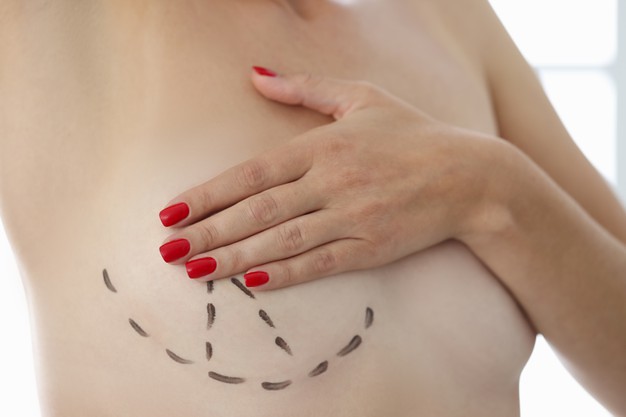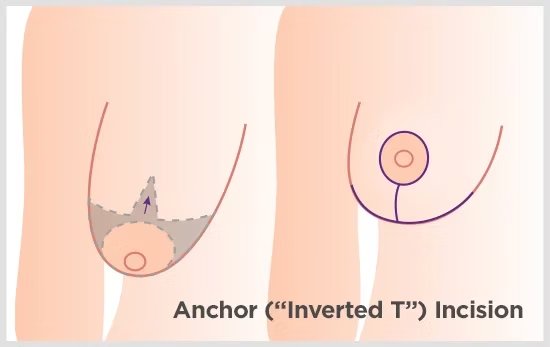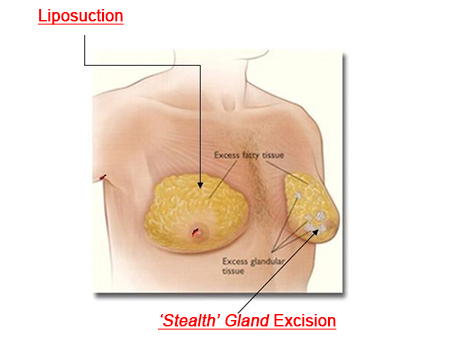What is Breast Reduction Surgery?

Breast reduction surgery, also known as reduction mammaplasty, is a specialized surgical procedure designed to reduce breast volume by removing excess fat, tissue, and skin from the breasts.
This procedure not only decreases the size and weight of the breasts but also reshapes them to achieve a more proportionate and aesthetically pleasing appearance.
The primary goal of breast reduction surgery is to alleviate physical discomfort and improve quality of life for individuals who experience challenges associated with overly large breasts.
By creating a breast size that is more proportionate to the patient’s body frame, the procedure can address both physical symptoms and aesthetic concerns.
Read more: Non-Invasive Body Contouring Treatments in Singapore
Why Consider Breast Reduction Surgery?
Breast reduction surgery is typically sought by individuals who experience various physical and emotional challenges due to disproportionately large breasts.
Here are some common reasons why patients consider this procedure:
Physical Relief
- Alleviate chronic pain: Reduces persistent back, neck, and shoulder pain that often requires regular pain medication
- Reduce nerve pain: Minimizes nerve compression and associated discomfort
- Resolve skin issues: Addresses chronic rashes or skin irritation under the breasts
- Improve posture: Helps correct posture problems caused by the weight of large breasts
- Enhance physical activity: Makes movement and daily activities more comfortable
- Eliminate bra strap grooving: Reduces painful indentations caused by bra straps
Aesthetic and Psychological Benefits
- Improve self-image: Enhances confidence and body image
- Better clothing fit: Makes it easier to find properly fitting clothes and bras
- Reduce social discomfort: Minimizes unwanted attention and social embarrassment
- Balanced proportions: Creates a more harmonious body silhouette
Read more: The Ultimate Guide to Breast Augmentation in Singapore
Who is a Suitable Candidate for Breast Reduction Surgery?
Determining eligibility for breast reduction surgery is crucial to ensure successful outcomes and minimize complications. Ideal candidates for this procedure typically include individuals who:
- Experience physical discomfort related to large breasts
- Have stable weight (not actively losing or gaining significant weight)
- Possess fully developed breasts
- Hold realistic expectations about the procedure and outcomes
- Are in good general health without medical conditions that could affect surgery or recovery
- Are non-smokers or willing to quit smoking before and after surgery
- Experience limitation in physical activities due to breast size
- Have difficulty finding properly fitting clothes
You might be interested: Gynaecomastia Surgery (Man Boobs) in Singapore
Who Should Not Undergo Breast Reduction Surgery?
In general, breast reduction surgery is not recommended if you:
- Are a smoker unwilling to quit temporarily
- Have very high BMI (typically over 30)
- Are a teenager whose breasts have not fully developed
- Have chronic health conditions such as diabetes or heart problems that pose surgical risks
- Want to completely avoid scars on your breasts
- Plan to have children in the immediate future (as breastfeeding might be challenging after surgery)
- Are still in the process of significant weight loss
Related article: Guide to Finding a Good Aesthetic Doctor in Singapore
Types of Breast Reduction Techniques
Several surgical techniques can be employed for breast reduction, with the appropriate method determined based on the patient’s unique anatomy, desired outcome, and surgeon’s recommendation.
Traditional or Inverted-T (Anchor) Method

This technique involves an anchor-shaped incision pattern and is particularly suitable for patients requiring significant breast reduction.
Key characteristics:
- Incisions go around the areola, down to the breast crease, and along the crease underneath the breast
- Allows for substantial tissue removal and reshaping
- Provides excellent access for addressing extensive sagging or asymmetry
- Typically results in more visible scarring but offers dramatic results
This might help: List of Aesthetic Treatments and Costs in Singapore
Vertical or “Lollipop” Method
Using a lollipop-shaped incision pattern, this method is ideal for moderate breast reduction requirements.
Key characteristics:
- Incisions are made around the areola and vertically down to the breast crease
- Results in less scarring compared to the inverted-T technique
- Suitable for moderate breast reduction and visible sagging
- Provides good breast reshaping capabilities
Liposuction-Assisted Breast Reduction

This minimally invasive approach employs liposuction to remove excess fat from the breasts.
You might be interested: Non-Surgical Fat Reduction: Treatments, Benefits, and Risks
Key characteristics:
- Involves small incisions to insert a thin tube connected to a vacuum
- Best suited for patients with predominantly fatty breast tissue and minimal skin excess
- Results in minimal scarring
- Generally offers faster recovery time
- Limited in addressing significant sagging or excess skin
Read more: The Comprehensive Guide to Liposuction in Singapore
The Breast Reduction Procedure: What to Expect
Understanding what happens before, during, and after breast reduction surgery can help patients prepare mentally and physically for the procedure.
Pre-Operative Consultation and Preparation
Before undergoing breast reduction surgery, you will have a comprehensive consultation with your surgeon to discuss:
- Your medical history and current health status
- Your goals and expectations regarding breast size and appearance
- The most suitable surgical technique for your specific case
- Potential risks and complications
- Recovery timeline and post-operative care
You may also undergo:
- Physical examination and measurements of your breasts
- Blood tests to assess your general health
- Baseline mammogram (particularly for patients over 40)
Preparation guidelines before surgery:
- Fast for 6-8 hours before the procedure
- Inform your doctor about any medications or supplements you’re taking
- Stop smoking at least 4-6 weeks before surgery
- Avoid blood-thinning medications like aspirin
- Maintain a stable, healthy weight
- Arrange for someone to drive you home after surgery
You might be interested: Calf Slimming: The Ultimate Guide to Toned and Slender Legs
The Surgical Procedure
Breast reduction surgery is typically performed under general anesthesia and takes approximately 2-5 hours, depending on the complexity of the case.
During the procedure:
- General anesthesia is administered
- Incisions are made according to the predetermined technique
- Excess breast tissue, fat, and skin are removed
- The nipple and areola are repositioned higher on the breast
- The breast is reshaped to create a more pleasing contour
- In cases of asymmetry, more tissue may be removed from the larger breast
- Drainage tubes may be inserted to remove excess fluid
- Incisions are closed with sutures
- Dressings and bandages are applied
Post-Operative Care and Recovery
Immediate recovery (first week):
- Post-operative pain is normal and will be managed with prescribed medication
- Antibiotics may be provided to reduce infection risk
- Drainage tubes are typically removed after 24-48 hours
- Dressings will be changed regularly
Early recovery (1-4 weeks):
- You’ll be asked to wear an elastic compression bra to protect your breasts
- Swelling and bruising are normal and will gradually subside
- Limited physical activity is recommended for 2-4 weeks
- Avoid heavy lifting and strenuous exercise
Long-term recovery (1-6 months):
- Most people recover sufficiently to resume normal activities within 1 month
- Scars will initially appear red and raised but typically fade over time
- Final results become apparent as swelling completely resolves
- Follow-up appointments will monitor healing progress
Risks and Complications of Breast Reduction Surgery
Like any surgical procedure, breast reduction carries certain risks and potential complications:
General Surgical Risks
- Infection
- Bleeding and hematoma (blood collection)
- Blood clots
- Adverse reactions to anesthesia
- Excessive scarring
Breast Reduction-Specific Complications
- Temporary or permanent changes in nipple or breast sensation
- Difficulty or inability to breastfeed
- Asymmetry in breast size or shape
- Differences requiring further surgical correction
- Partial or total loss of the nipple and areola (rare but serious)
- Fat necrosis (death of fatty tissue)
Results and Benefits of Breast Reduction Surgery
Successful breast reduction surgery can provide numerous benefits:
- Immediate relief: Many patients experience immediate relief from physical symptoms
- Improved body proportion: Creates a more balanced silhouette
- Enhanced self-confidence: Reduces self-consciousness about breast size
- Broader clothing options: Makes finding well-fitting clothes easier
- Increased physical activity: Enables participation in activities previously limited by breast size
- Long-lasting results: Outcomes typically remain stable, particularly with weight maintenance
It’s important to note that some scarring is inevitable after surgery. While scars usually fade over time, they will never completely disappear.
Most patients find that the benefits of the procedure far outweigh concerns about scarring.
Breast Reduction Surgery in Singapore: Insurance Coverage
In Singapore, breast reduction surgery may be covered by insurance under specific circumstances. The criteria typically include:
- Removal of substantial breast tissue (generally more than 250 grams per breast or 500 grams total)
- Documentation of physical symptoms caused by large breasts
- Evidence that conservative treatments have been ineffective
- Severity of symptoms (considered on a case-by-case basis)
Patients should consult with their insurance provider to understand their specific coverage options and requirements.
Male Breast Reduction Surgery
Abnormal enlargement of male breasts, known as gynecomastia, can also be treated through breast reduction surgery.
This condition affects approximately 40-60% of men and can occur due to hormonal imbalances, certain medications, or underlying medical conditions.
For men experiencing gynecomastia, it’s essential to first undergo proper investigation to rule out serious causes such as male breast cancer (which accounts for about 1% of all breast cancer cases).
Once a diagnosis is confirmed, male breast reduction surgery can effectively address the condition and restore a more masculine chest contour.
Frequently Asked Questions
Is breast reduction surgery considered a major surgery?
Yes, breast reduction surgery is considered a major procedure that involves significant removal of breast tissue, fat, and skin under general anesthesia.
The surgery typically takes 2-5 hours to complete, depending on the extent of reduction needed.
However, with proper pre-operative assessment and post-operative care, it is generally safe and effective for suitable candidates.
How should I prepare for my breast reduction surgery consultation?
To prepare for your breast reduction surgery consultation, you should:
- Research the procedure to familiarize yourself with the basics
- Gather your complete medical history, including previous surgeries and current medications
- Prepare a list of your concerns, goals, and questions
- Consider bringing photos that represent your desired outcome
- Be ready to discuss your lifestyle, including physical activities and future pregnancy plans
- If possible, wear easily removable clothing for the physical examination
What is the typical recovery timeline after breast reduction surgery?
The recovery timeline after breast reduction surgery varies from person to person but generally follows this pattern:
- 1-2 weeks: Initial recovery period with the most discomfort and limited mobility
- 2-4 weeks: Return to light daily activities and work (depending on job requirements)
- 4-6 weeks: Gradual resumption of more strenuous activities
- 3-6 months: Complete healing with final results becoming apparent as all swelling resolves
Most patients can resume light daily activities within 1-2 weeks but should avoid strenuous exercise and heavy lifting for at least 6 weeks or until cleared by their surgeon.
Will I be able to breastfeed after breast reduction surgery?
Breastfeeding after breast reduction surgery is possible for many women, but it depends on the surgical technique used and individual healing.
Modern techniques aim to preserve the milk ducts and their connection to the nipple, increasing the chances of successful breastfeeding.
However, you should discuss this concern with your surgeon if you plan to have children in the future, as some women may experience reduced ability to produce adequate milk following the procedure.
How much breast tissue is typically removed during breast reduction surgery?
The amount of breast tissue removed during breast reduction surgery varies significantly from patient to patient, depending on their starting breast size, desired outcome, and body proportions.
In general, removal of 500-1000 grams per breast is common for significant reductions, while smaller reductions might involve 200-500 grams per breast.
For insurance coverage in Singapore, removal of at least 250 grams per breast or 500 grams total is often required.
Will my breasts grow back after reduction surgery?
While breast tissue does not “grow back” in the traditional sense after reduction surgery, certain factors can cause the breasts to increase in size following the procedure:
- Significant weight gain
- Hormonal changes due to pregnancy
- Certain medications
- Menopause-related changes
Maintaining a stable weight and healthy lifestyle helps ensure long-lasting results. It’s worth noting that true regrowth of breast tissue after reduction is extremely rare.
How visible will my scars be after breast reduction surgery?
Scarring is inevitable after breast reduction surgery, but the visibility depends on several factors:
- The surgical technique used (anchor, lollipop, or liposuction)
- Your skin type and natural healing tendencies
- Post-operative scar care
- Genetic factors affecting scar formation
Initially, scars will appear red or pink and may be raised. Over time (typically 12-18 months), they usually fade to a lighter color and flatten.
Most patients find that scars become less noticeable with time and are easily concealed under clothing, including swimwear.
Your surgeon can recommend scar management strategies to optimize healing.
Can breast reduction surgery help with asymmetrical breasts?
Yes, breast reduction surgery is highly effective for addressing breast asymmetry. During the procedure, the surgeon can remove different amounts of tissue from each breast to create better symmetry.
Additionally, the nipple and areola positions can be adjusted to ensure a balanced, harmonious appearance.
If you have significant asymmetry, make sure to discuss this specific concern with your surgeon during consultation.
What cup size can I expect after breast reduction surgery?
While surgeons cannot guarantee a specific cup size after breast reduction, they can work with you to achieve a size proportionate to your body frame.
Rather than focusing solely on cup size, which varies between brands, surgeons typically aim for a balanced, natural-looking result that alleviates physical symptoms while meeting aesthetic goals.
During your consultation, you can discuss your desired outcome, and your surgeon will advise on what’s realistically achievable.
Are the results of breast reduction surgery permanent?
The results of breast reduction surgery are generally long-lasting, but natural changes to the breasts can still occur over time due to:
- Aging
- Weight fluctuations
- Pregnancy and breastfeeding
- Hormonal changes
- Gravity
To maintain your results, it’s advisable to:
- Maintain a stable weight
- Wear supportive bras, especially during physical activity
- Follow a healthy lifestyle
- Avoid smoking
With proper care and lifestyle management, most patients enjoy their results for many years or even decades.
Conclusion
Breast reduction surgery offers significant physical, emotional, and aesthetic benefits for individuals struggling with the challenges of disproportionately large breasts.
By understanding the procedure, preparation requirements, recovery process, and potential outcomes, patients can make informed decisions about whether breast reduction surgery is right for them.
If you’re considering breast reduction surgery in Singapore, consult with a qualified plastic surgeon to discuss your specific needs, concerns, and goals.
A personalized approach will help ensure that you achieve the results you desire while improving your overall quality of life.

